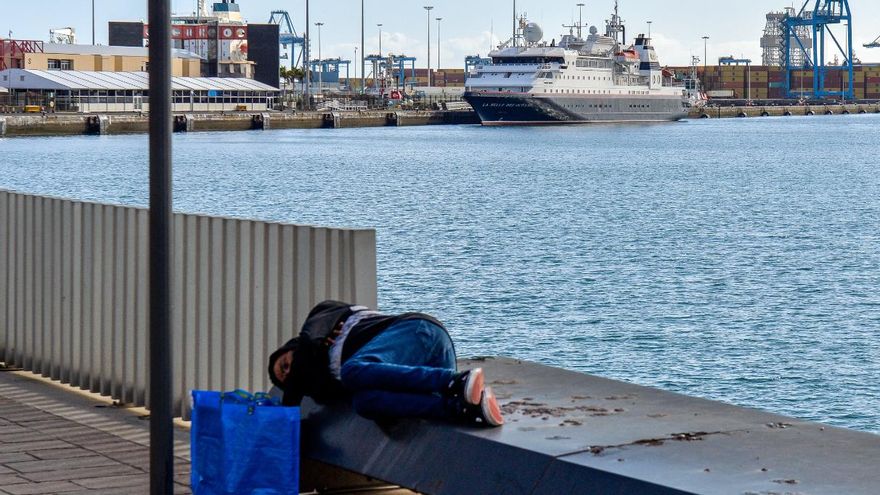The Canary Islands’ Economic Paradox
Comparisons can be invidious, but they are often unavoidable. When measuring wealth among Spain’s autonomous communities, the Canary Islands frequently come out on the losing end. This is true even when the archipelago’s main economic engine is firing on all cylinders. The tourism sector is in rude health, with the pandemic and its consequences a distant memory. The figures for traveler numbers and revenue have not only matched those of the prosperous year of 2019—they have shattered them. Yet, this picture of growth isn’t reflected in the per capita wealth of Canarians, which has failed to recover fully from the impact of COVID-19 and remains far below the Spanish average.
By the Numbers: A Growing Gap
The latest regional accounting statistics from Spain’s National Institute of Statistics (INE) show that in 2024, the Canary Islands’ GDP per capita index reached only 79.4% of the national average. In simple terms: while the average national income sits at 100, the Canarian figure doesn’t even reach 80. In absolute terms, the per capita income in the Canaries has grown since 2019, rising from 21,159 euros to 25,925 euros in 2024. However, this increase hasn’t closed the gap with the national average. In percentage terms, the index relative to Spain has slightly worsened, dropping from 79.5% to 79.4%. This means that although Canarians have more euros in their pockets today than before the pandemic, they are, relatively speaking, one-tenth poorer compared to the rest of the country than they were five years ago.
A Long-Term Decline in Relative Wealth
It’s noteworthy that 2019 was the first time the Canary Islands’ percentage fell below 80% of the national average, and it has not recovered since. The absolute rise is also evident compared to 2023, with an annual increase of 6.5%—the highest of all the autonomous communities. But despite this advance, the comparison with the national average barely improves, making it clear that the economic growth shown in the figures does not translate into a real convergence with the standard of living in the rest of Spain. Looking further back, the situation was very different. In the late 1990s, the Canary Islands were close to the Spanish average, and in the year 2000, their index reached 93.8%, evidence that the region has steadily lost relative ground over the last few decades.
Canaries vs. Balearics: A Tale of Two Archipelagos
In the ranking of autonomous communities, the Canary Islands place ahead of only Andalusia (75.3%) and Extremadura (77.3%), and are far behind regions like Catalonia (114.7%), the Basque Country (125.7%), or Madrid (137.1%)—economies with very different structures. The most surprising contrast, however, is with the Balearic Islands, the region most similar to the Canaries in terms of its tourist economy. The Balearics’ GDP per capita reaches 110.4%, significantly higher than the Canaries’ despite having tourism that is more seasonal and concentrated in the summer months. The Canary Islands, in contrast, receive more and more tourists year-round, but with lower prices for hotels, restaurants, and services. This limits revenue per visitor and explains part of the enormous economic difference between the two island groups.
Beyond the Numbers: Quality of Life and Contributing Factors
While GDP per capita isn’t a perfect indicator of quality of life, it does reflect important trends. Generally, regions with higher wealth per person are those that offer better living conditions: greater access to services, better infrastructure, and higher wages. In this sense, the gap separating the Canary Islands from the rest of the country reflects not just lower income, but also challenges in terms of welfare and opportunities for its inhabitants. When analyzing GDP per capita, it’s useful to consider several influencing factors. Insularity is one; the cost of living and production in the Canaries is higher than in other regions, which can affect per capita wealth. However, this same factor applies to the Balearic Islands, whose income per person is much higher, so it doesn’t fully explain the gap. Population growth is another element; if a region’s population grows faster than its GDP, income per person can decrease. In the case of the Canaries, although the population grew by 3.97% between 2019 and 2024, the region’s GDP increased by 18.4% in the same period—a rate far exceeding population growth. This demonstrates that demographic increase is not a valid excuse for the Canarian per capita income lagging behind the national average.
From Economic Data to Social Discontent
The contradiction between the tourism sector’s boom and its failure to be reflected in citizens’ wealth is not just an economic statistic. It is one of the underlying factors fueling a growing social discontent that has been brewing for years in the archipelago. Many islanders question why the tourism sector’s prosperity doesn’t translate into tangible improvements in the population’s life. From these doubts and this dissatisfaction, the “Canarias Tiene Un Límite” (The Canary Islands Have a Limit) movement was born. Last year, it mobilized thousands of people who protested in the streets against pressure from the real estate market, the high cost of living, and an economic model that doesn’t give back to the people.
The Urgent Need for a New Economic Model
The tourism sector itself is not to blame, but the data clearly shows that something in the economic model isn’t working. The Canary Islands have built much of their prosperity on tourism, and yet, this strength does not translate into greater well-being for its citizens. This disconnect highlights the limits of a model that is overly dependent on a single economic engine—nothing new—and brings back to the table the urgent need for diversification. The goal is not to renounce tourism, but to complement it with other sectors capable of generating quality employment, added value, and a more balanced distribution of wealth. Because as long as macroeconomic figures continue to grow without that growth reaching the pockets of the population, the feeling of imbalance—and the discontent that accompanies it—will remain latent.

